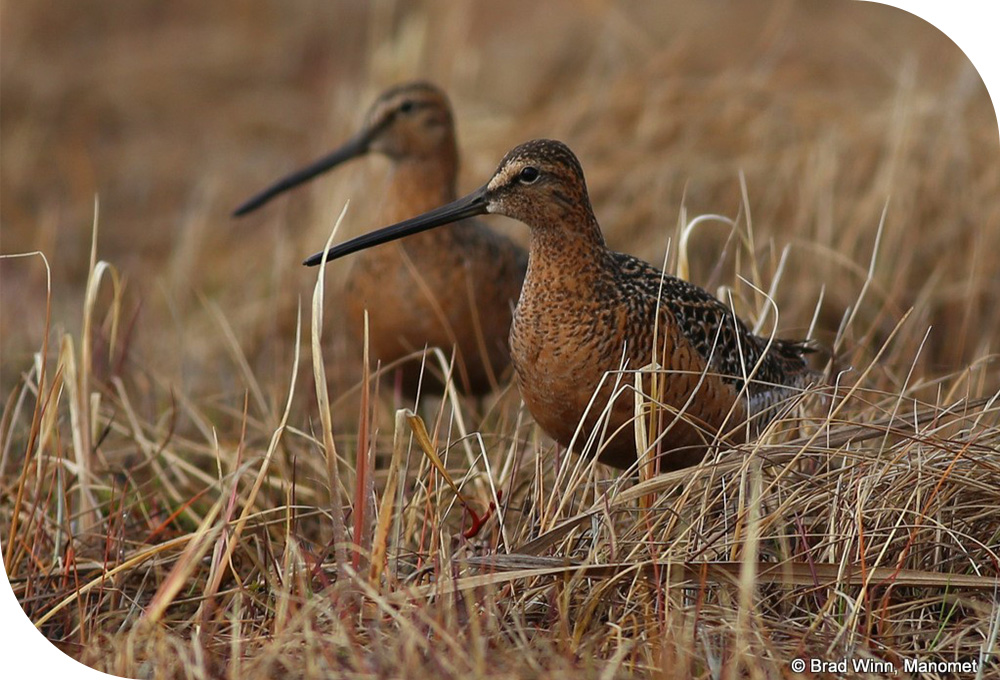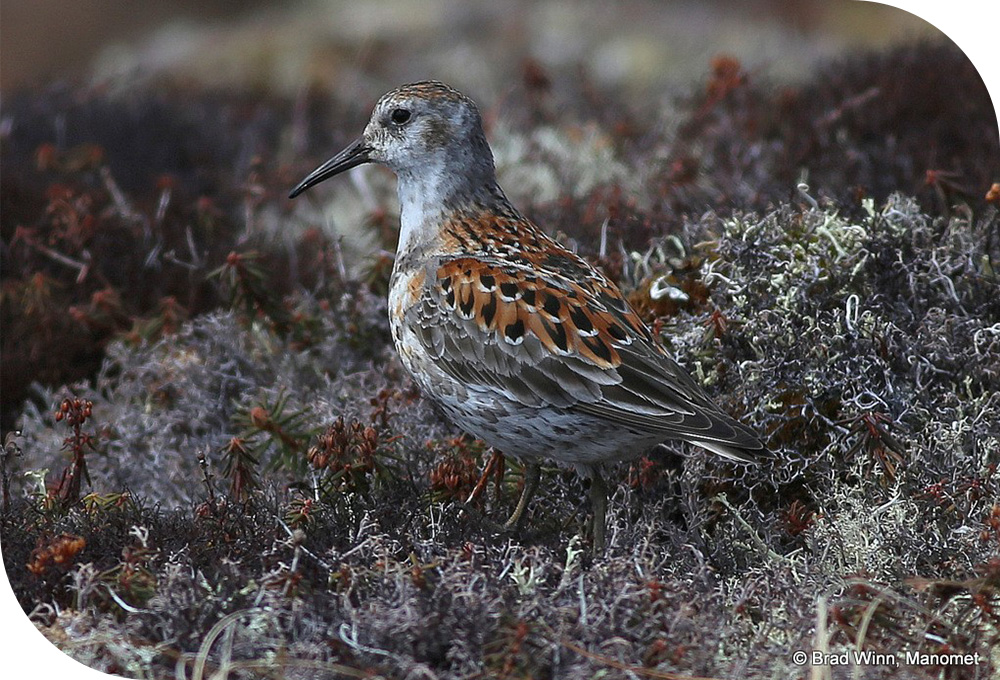In Chevak, Alaska, right now (January 29, 2020), the temperature is twelve below zero, but it feels like forty below zero with a strong wind out of the northwest. Chevak is a village of Cup’ik people on the coast of the Yukon River Delta. While the coastal village is currently deep into winter, with just seven hours of daylight, rapid day-length gains during the next few months with eventually bring light onto the land for almost twenty-four hours a day. The sun will pump new life into the tundra of the vast Delta surrounding Chevak and other villages, bringing a virtual crescendo of wildlife activity by late May.
In the spring seasons of both 2015 and 2016, Manomet’s shorebird biologists worked with the US Fish and Wildlife Service to survey the entire Delta for shorebird nesting activity. The article below is from the 2015 field season and was written for Manomet’s shorebird field expedition “blog” at shorebirdscience.org. As we prepare for the 2020 field season in Alaska and other areas, we thought you would enjoy this reflection of shorebird life on the Yukon River Delta.
When we arrived on the Yukon River Delta in mid-May 2015, some of the shorebirds were just arriving too. We would find areas on our survey plots that had small flocks of feeding shorebirds instead of one or two defending pairs. We saw flocks of Pectoral Sandpipers, Long-billed Dowitchers, and Red-necked Phalarope at particularly good feeding sites. Many of these bird would be moving on to other Alaskan breeding sites, like the Arctic National Wildlife Refuge, or Seward Peninsula, while others seemed to be establishing themselves as residents, and were testing vocal capacity and partial flight displays as growing signs of territorial aggression.
These new arrivals had come from winter sites on both sides of the Pacific, the western Atlantic, Caribbean, and throughout the Gulf of Mexico. As an example, Red-necked Phalarope spend the winters at sea in tropical ocean waters off of the pacific coast of South America. As the days have passed, we have the sense that migrants have moved on and the residents are now getting down to business.


The shorebirds we are counting are using their wings now, not to propel them on hemispheric journeys but to secure a territory, a mate, and to produce a four-egg nest. The strong outer flight feathers on their wings that had cut through the air on night-and-day flights, flapping millions of strokes during migration to get them here, now come into play during a very intense period of courtship, territorial battles, defense, and fleeing. This is the period of great activity, the shorebirds are in motion in somewhat of a tundra dance all in the very serious game of reproduction. This is the brief period when we, as observers, can try to understand how many of each species we have on our randomly selected 40 acre plots. Once the birds have a full clutch of eggs, the tundra starts to get quiet again, as incubation begins and embryos develop.


Ironically, the feathers on the wings of most of these shorebirds, the outermost ten feathers known as “Primary flight” feathers, that are so important during migration and now the breeding season, were grown on migration stopover periods the preceding year. The nutrients of these feathers came from foods that these birds ate on the mudflats thousands of miles from the breeding grounds. To grow these strong feathers takes a tremendous amount of food, usually in the form of invertebrate animals, pulled from soft mud or intertidal sands of a low tide beach. The fact that the flight capability of these shorebirds is dependent upon finding available, reliable, high quality and abundant food sources in distant places emphasizes the need for cooperative international conservation efforts. The Yukon Delta shorebirds are carrying proteins in their feathers from coastal beaches, freshwater wetlands, and interior grasslands in places as dispersed and distant as South Carolina, Hawaii, Australia, China, Ecuador, Brazil, and Argentina.

So these wing feathers, grown in from nutrients in distant wetlands, have not only transported the shorebird thousands of miles, been critical in securing a nesting site and territory, but they will also aid in incubating the eggs and creating a rain shield by forming a hard outer surface to the soft feathering under the incubating adult birds. Once the eggs hatch, the young chicks rely on the adults for periodic warmth as they begin to forage on the abundant insects hatching from the tundra pools. The adults wing feathers act as shelter and containment for the chicks as they regain lost heat and ready themselves for another bout of insect hunting.

Almost constantly in motion and exposed to strong sunlight radiation during this period of intense activity, flight feathers will wear down during the breeding season, and become visibly frayed and pale in color as the weeks go by. When the shorebirds depart again in late July and August to begin their southbound journey, the feather cycle will begin again at strategic staging sites where the birds will seek and find the nutrients they need to molt the old, and grow new flight feathers that will last a year.

Our survey team is privileged to be witness to this shorebird scene on the immense and complex delta wetlands of one of North America’s largest rivers. We will continue to work at full capacity to ensure the conservation mechanisms are in place to provide the habitats these birds need throughout their migration cycles.





 Back to all
Back to all


